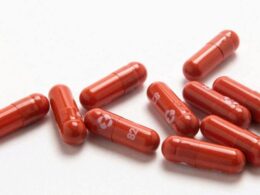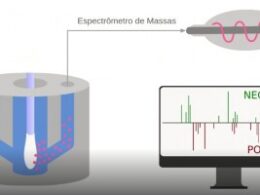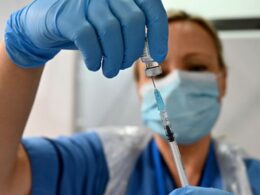We must reckon with the unpleasant reality that our vaccines have failed to protect against infection and transmission, as we hoped they would.
I suggest that we expand our range of targets for drug development far beyond the common protease to the many enzymes and regulatory proteins specific to SARS-CoV-2 that do not exist in humans.
Key messages (Summarized by the Editor of the blog, Joaquim Cardoso MSc.)
What is the problem?
- Vaccines remain a critical tool to protect us against severe disease, hospitalization and death from the omicron variant, but breakthrough infections are becoming increasingly common.
What is the solution?
- Our first defense is public health. Strong testing, tracing and supported isolation systems can prevent rapid transmission throughout communities. To achieve this, we can significantly reduce the price of rapid tests.
- Our second defense is an armamentarium of medical treatments. So how do we defeat such a skilled and formidable opponent? One answer was monoclonal antibodies …
What are the lessons learned from HIV?
- We need to follow the strategies used for HIV and create combinations of powerful, long-acting drugs… that target a broad range of functions with a high therapeutic index to fill the gaps in our current strategy for long-term protection.
- I suggest that we expand our range of targets for drug development far beyond the common protease to the many enzymes and regulatory proteins specific to SARS-CoV-2 that do not exist in humans.
The Hill
BY WILLIAM HASELTINE, OPINION CONTRIBUTOR
12/27/2021
Omicron has caught us unprepared. The danger of this variant lies not only in its lightning transmission speed but also in its ability to elude our very best vaccines.
Vaccines remain a critical tool to protect us against severe disease, hospitalization and death from the omicron variant, but breakthrough infections are becoming increasingly common.
Vaccines remain a critical tool to protect us against severe disease, hospitalization and death from the omicron variant, but breakthrough infections are becoming increasingly common.
While some hope that this is the last of the variants that will afflict us, that is by no means certain.
The capacity for coronaviruses to flourish in immune populations is one of their defining features.
The critical question we should be asking is: Will the disease become milder or more severe?
It is important to remember how closely linked SARS-COV-2 is to SARS and MERS, which both have significantly higher case fatality rates but are less transmissible.
Fortunately, we still have many untapped defenses that we must now weaponize against omicron and future variants.
Our first defense is public health.
Strong testing, tracing and supported isolation systems can prevent rapid transmission throughout communities.
Countries across Asia that have rigorously implemented and invested in these systems from the beginning of the pandemic have fared significantly better during omicron with lower overall case counts and mortality rates.
The reports of frustrated Americans stuck in hours-long testing lines and empty pharmacy shelves devoid of rapid tests this week are a stern reminder of the critical importance of consistently investing in public health measures throughout a pandemic.
Many who cannot afford to take hours off from work to line up for testing or cannot afford or find rapid tests could be unknowingly infecting their communities and delaying necessary treatment for the virus.
It is incomprehensible that we are still facing a testing crisis almost two years into the pandemic.
I was among the chorus of experts in early 2020 that called for widely available, free rapid tests as a way to control the pandemic.
Each person should be able to rapid test themselves two-to-three times a week so they might voluntarily modify their behavior and seek help as needed.
Each person should be able to rapid test themselves two-to-three times a week so they might voluntarily modify their behavior and seek help as needed.
To achieve this, we can significantly reduce the price of rapid tests.
The tests currently retail at an average price of $23. In reality, these tests can be manufactured at a cost of 50 cents. In 2018, Abbott Laboratories provided 100 million rapid Hepatitis B tests to the Egyptian government at a cost of 50 cents per test. A similar deal could be struck to provide all Americans with access to rapid COVID tests.
Our second defense is an armamentarium of medical treatments.
We must reckon with the unpleasant reality that our vaccines have failed to protect against infection and transmission, as we hoped they would.
But they do provide strong protection against severe disease, hospitalization and death, which is not to be underestimated.
There remains hope that newer generations of vaccines will provide broad protection against most if not all variants.
Indeed, such vaccines are slowly making their way through the testing regulatory process, but I believe it is unwise to put all our eggs in one basket when the stakes are this high.
There remains hope that newer generations of vaccines will provide broad protection against most if not all variants.
Coronaviruses are a formidable opponent as they have evolved over millions of years to continually reinfect immunocompetent populations with great sophistication.
They evade and suppress our immune systems with three fundamental tactics.
- The first tactic is antigenic variation, in which the virus disguises itself from the existing immune system by changing the outer surface.
We see this each year with the influenza virus. Cold-causing coronaviruses infect about one-third of the human population year after year, making it clear that there is no end to the way the virus can adapt and reinfect.
- Once the virus enters a new host, either because of waning antibodies or antibodies that do not recognize a new variant, the virus encounters a myriad of cellular defenses collectively called innate immunity.
With great sophistication, the virus delays alarm signals (which normally allows the body to protect itself) for as long as five to six days. During this interval, the virus prolifically replicates and then exits to be transmitted to others.
- The third tactic is speed. After vaccination or infection, high levels of antibodies eventually wane, and we depend on our memory cells to create new antibodies.
The virus replicates at such blinding speed that it can outrun the memory response that generally takes three to five days.
In that period the virus again has the ability to rapidly replicate, exit and transmit to a new host.
The good news is that the residual memory immune response may be what’s protecting many people who are vaccinated against severe disease, hospitalization and death.
So how do we defeat such a skilled and formidable opponent?
One answer was monoclonal antibodies that can be used for treatment and also prophylactically during outbreaks in high-risk populations living in congregate settings such as nursing homes.
But the omicron variant has developed resistance to all but two antibody treatments.
Fortunately, our experience with HIV provides a clear path forward.
We have not succeeded in creating a vaccine for this virus, but thanks to many decades of research into treatment, the virus is far from a death sentence today.
Just last week, the U.S. Food and Drug Administration granted approval for the first injectable treatment for HIV pre-exposure prevention. Developed by GlaxoSmithKline, the drug Apretude prevents HIV infection with injections given every two months.
We need to follow the strategies used for HIV and create combinations of powerful, long-acting drugs…
that target a broad range of functions with a high therapeutic index to fill the gaps in our current strategy for long-term protection.
There are still many unexplored targets for SARS-CoV-2 drug development.
I suggest that we expand our range of targets for drug development far beyond the common protease to the many enzymes and regulatory proteins specific to SARS-CoV-2 that do not exist in humans.
This will give us the greatest possibility of developing drugs that are lethal to the virus but harmless to us.
I suggest that we expand our range of targets for drug development far beyond the common protease to the many enzymes and regulatory proteins specific to SARS-CoV-2 that do not exist in humans.
Redesigning our SARS-CoV-2 drugs will not be a simple task.
- It will require accelerated research and global collaboration that not only breaks down geographic borders but also the silos that exist between academia and the pharmaceutical biotechnology industry.
- It will require similar levels of investment and resources to those we saw used for Operation Warp Speed.
But by strengthening both our public health and medical defenses, we can protect ourselves from the next omicron.
William Haseltine is president of ACCESS Health International. An infectious disease expert, Haseltine was formerly a Harvard Medical School professor and founder of the university’s cancer and HIV/AIDS research departments.
About the author
William Haseltine is president of ACCESS Health International. An infectious disease expert, Haseltine was formerly a Harvard Medical School professor and founder of the university’s cancer and HIV/AIDS research departments.
Originally published at https://thehill.com on December 27, 2021.












